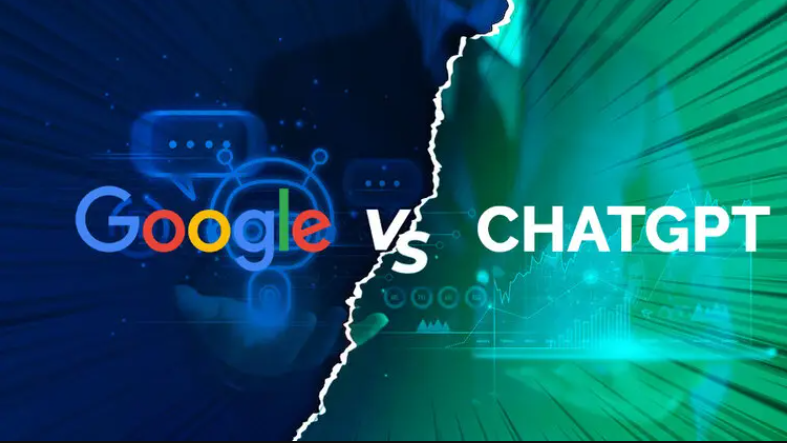Bard vs. ChatGPT: Google’s newly developed AI technology presents alternative to popular platform
Image attributed to Current Affairs
Google’s Bard and Open AI’s ChatGPT are currently two of the most popular AI chatbots available to users – what are the benefits and drawbacks of each?
On Feb. 6, in an effort to present a viable alternative to OpenAI’s widely used AI technological platform ChatGPT, Google announced the release of its newest artificial intelligence chatbot, Bard.
Bard is powered by Google’s interactive language model, LaMDA, which uses multimodal user intent (incorporating queries with a real-time video feed to better answer users’ questions) and reinforcement learning (machine learning training method based on rewarding desired behaviors and punishing undesired ones) to provide users with relevant feedback. The program is designed to run on less computing power than most other AI technologies, granting more user access and generating a greater diversity of responses. Currently, the program is still in its beta stage of development and is only available to a select number of users. Still, according to Google, it will soon be made accessible to the general public as more interactive features continue to be added.
“Bard seeks to combine the breadth of the world’s knowledge with the power, intelligence and creativity of our large language models,” Google CEO Sundar Pichai said. “It draws on information from the web to provide fresh, high-quality responses.”
The program aims to teach and simplify complex topics to the average user, such as new scientific discoveries from NASA’s James Webb Space Telescope or the elaborate world of cryptocurrency. The technology will also provide detailed answers encompassing a wide array of topics while continuing to distill complex information and contrasting perspectives into easy-to-digest formats.
“We will need to form opinions on what we think is acceptable to be generated by AI,” English teacher Ashley Amelianovich said. “Weather forecasts, perhaps? Maybe a Buzzfeed quiz? What we feel needs a human touch.”
In addition to Bard, ChatGPT is another popular artificial intelligence chatbot, developed by OpenAI in November 2022. In many respects, Bard and its competitor, ChatGPT, operate similarly. Both are AI technologies that prompt users to type in queries to receive human-like responses. However, there are significant distinctions between the two platforms, the foremost being that Bard obtains all of its information via the Internet, ensuring a relevant database equipped with the most recent factual information.
Additionally, Bard answers real-time queries, provides regular Google search results, does not have a plagiarism detector and is free to use. Meanwhile, ChatGPT relies on a database equipped with data only recorded until 2021, provides solely text-based responses, has a plagiarism detector and includes a paid plan with access to faster response times and new features/improvements through its premium model, ChatGPT Plus.
Nevertheless, one common concern that has been raised in regard to both platforms is factual accuracy, as AI experts warn that artificial intelligence databases can misrepresent content when pulled from incorrect or unreliable sources.
“With a lot of learning and personal integrity, writers of all ages could use these AI technologies for good: a brainstorm or a personal copy editor, for example,” Amelianovich said. “However, this will also require us as readers to read with a more critical eye in order to discern the credibility of sources.”
A video demonstration by Google executives showcasing Bard even contained a reply falsely suggesting that NASA’s James Webb telescope was used to take the first pictures of an exoplanet outside the solar system. Since AI databases are based on large, open-source datasets, experts say they can often contain errors that the chatbot repeats, with calculated testing being the only way of preventing widespread measures of inaccuracy.
“By their very nature, these sources [artificial intelligence databases] have biases and inaccuracies which are then inherited by the AI models,” Institute for People-Centered AI director Andrew Rogyski said. “Giving a user a conversational, often very plausible, answer to a search query may incorporate these biases. This is a problem that has yet to be properly resolved.”
In response to the flaws seen in Bard’s early stage of development, Google executives have admitted that its technology will require rigorous testing, combining user feedback with internal company measures to ensure its responses achieve a high standard of quality. AI tools aim to beneficially restructure the digital landscape through innovative measures but despite their enormous potential, the technology is still prone to fallibility. Chatbots are dependent on vast amounts of Internet-based information to provide answers and therefore, still have major development to undergo before they can unbiasedly distinguish between fact and fiction.

Aiden is a senior who serves as the Editor-in-Chief and News Editor of North Star News. Since first joining the staff during his freshman year, he has...







